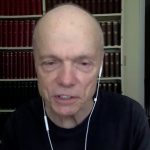Utah scientists marvel at new Webb Telescope photos
Jul 12, 2022, 6:35 PM | Updated: Aug 3, 2022, 10:07 am
LOGAN, Utah — People from around the world watched in amazement as NASA released more images from the Webb Telescope Tuesday.
Nearly 300 things could have gone wrong with the telescope during its launch and deployment. One of those potential problems included the mirrors that were developed in part at Utah State University.
To see all of those components working together has astounded so many people.
The pictures show what stars and galaxies looked like about 4.6 billion years ago.
“For me, it’s actually the detail in those galaxies that kind of blew me away,” said Doctor Anil Seth from the University of Utah.
Seth wants to know if Webb’s images and some in-depth breakdowns of the light out there could help give us some answers.
You've likely already had a look at these amazing images from NASA's James Webb telescope. On @KSL5TV news at 5&6, I'll have reaction from a Utahn who will soon get to use the telescope for his research into black holes at the Unversity of Utah. #Webbtelescope #WebbSeesFarther pic.twitter.com/MkkI6wcVXc
— Mike Anderson (@mikeandersonKSL) July 12, 2022
“For these super-distant galaxies, you can see these globular star clusters around these galaxies that are halfway or almost all the way into the beginning of the universe,” Seth said.
He will be looking at the center of our galaxy and others with Webb to study black holes.
“It allows us to see at wavelengths that previously we didn’t really have good glasses for, you know. Like it’s a much safer view, like more than a hundred times better than previous telescopes and infrared wavelengths,” Seth said.
The mirrors that take in that light were developed at Utah State University.
Students like Crystal Tingle get to study the composite materials that make them and that will likely fuel future projects.
“I’ve just grown up with Hubble and those are already spectacular images. And now with James Webb and for how long it’s taken to develop and get these pictures ready, it’s yeah, breathtaking to think that yeah, billions of light-years away,” Tingle said.
They are breathtaking views for both young and older astronomers.
“It’s just astounding what humans have been able to do,” said Patrick Wiggins, NASA’s ambassador to Utah.
He’s excited about all that potential. “And actually answer questions that we haven’t even thought to ask yet. There’s just so much possibilities of what’s going to happen. It’s like a newborn kid,” Wiggins said.
By looking so far into the past of our universe Dr. Seth said he hopes to get a peek into how black holes are formed and some clues into where they come from.
He plans to pour over the Webb data for years.




















